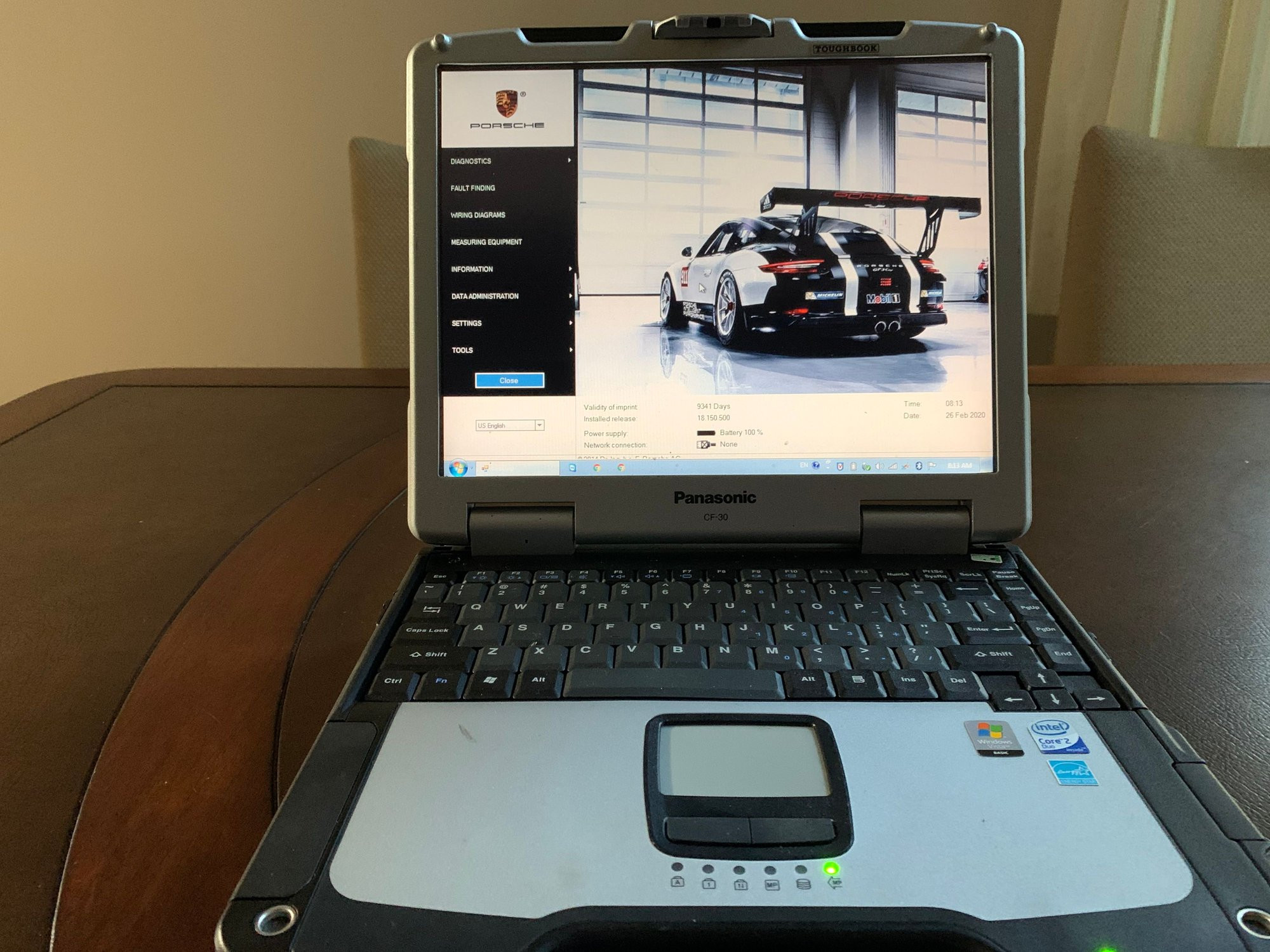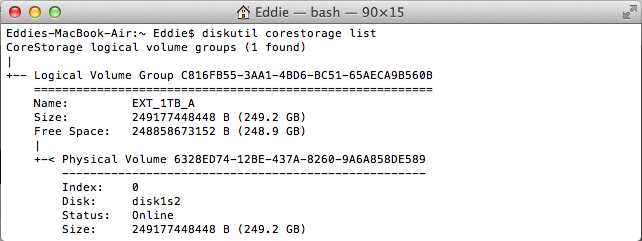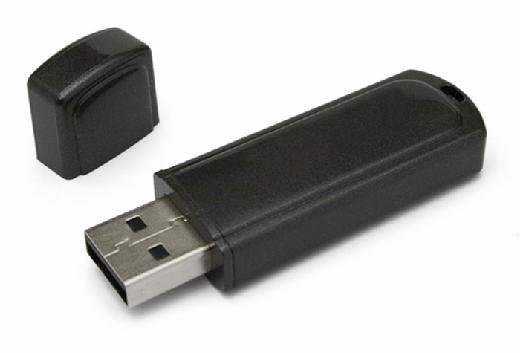What is an ECU? Understanding Your Car’s Electronic Brain
In the world of modern automobiles, the term ECU is thrown around frequently, often in discussions about performance tuning, diagnostics, and repairs. While ECU can stand for Electronic Control Unit in a broad sense, encompassing various control modules within a vehicle, in the automotive repair context, it most commonly refers to the Engine Control Unit. Sometimes, you might also hear it called an Engine Control Module (ECM), and when it manages both the engine and transmission, it’s known as a Powertrain Control Module (PCM).
For this in-depth exploration, we’ll focus primarily on the ECU as the Engine Control Unit, the sophisticated computer that governs the heart of your vehicle – the engine.
What Does an Engine Control Unit (ECU) Actually Do?
At its core, the engine ECU is responsible for managing the engine’s most critical functions. Think of it as the conductor of an orchestra, ensuring every part plays in harmony to create a powerful and efficient performance. The ECU’s primary tasks revolve around controlling fuel injection and, in gasoline engines, the precise timing of the spark that ignites the air-fuel mixture.
To achieve this precise control, the ECU constantly monitors the engine’s internal state using a network of sensors, most notably the Crankshaft Position Sensor. This sensor provides crucial information about the position and speed of the crankshaft, allowing the ECU to activate fuel injectors and the ignition system at precisely the right moment in the engine’s combustion cycle.
While the fundamental principles of fuel and ignition control might seem mechanically achievable (and indeed, were in older vehicles), modern engine management is far more complex. Today’s ECUs go beyond simple on/off actions; they orchestrate a symphony of adjustments to optimize engine performance, fuel efficiency, and minimize harmful emissions.
The Importance of Air-Fuel Mixture Management
An internal combustion engine is essentially a sophisticated air pump that generates power by burning fuel. To operate effectively, it needs a precise mixture of air and fuel. This mixture is critical not just for power output but also for the engine’s overall health and environmental impact.
- Too much fuel (rich mixture): Leads to incomplete combustion, wasted fuel, increased emissions, and potentially engine damage.
- Too little fuel (lean mixture): Results in weak combustion, reduced power, increased engine temperature, and potential damage to engine components.
Historically, carburetors were the mechanical devices used to control this air-fuel mixture. They relied on fixed jets and engine vacuum to meter fuel, a system that was relatively simple but lacked the precision required for modern vehicles. With today’s stringent demands for fuel economy and low emissions, carburetors simply can’t deliver the necessary level of control.
This is where the ECU steps in. It takes over the management of fuel injection, ignition timing, and various engine ancillaries, using digitally stored algorithms and lookup tables rather than purely mechanical methods. This digital control allows for incredibly precise and dynamic adjustments to the air-fuel mixture based on a multitude of factors.
Precise Fuel Management: Adapting to Ever-Changing Conditions
An ECU isn’t just a static controller; it’s a dynamic system that constantly adapts to a wide range of variables to ensure optimal engine operation. It must consider numerous factors when calculating the ideal air-fuel mixture ratio, including:
- Engine Demand: How much power is the driver requesting (accelerator pedal position)?
- Engine/Coolant Temperature: Is the engine cold or at operating temperature?
- Air Temperature: What is the temperature of the incoming air?
- Fuel Temperature: What is the temperature of the fuel?
- Fuel Quality: Is the fuel of the expected octane rating?
- Varying Filter Restriction: How clean or clogged are the air and fuel filters?
- Air Pressure ( атмосферное давление ): What is the current atmospheric pressure?
- Engine Pumping Efficiency: How efficiently is the engine moving air?
To gather information about these variables, the ECU relies on a network of sensors strategically placed throughout the engine and vehicle. These sensors provide real-time data that the ECU processes using its internal programming to make precise adjustments.
For example, when you press the accelerator pedal, you’re signaling increased engine demand. This action opens the throttle valve, allowing more air to enter the engine. The Mass Air Flow (MAF) sensor immediately measures this increased airflow and sends the data to the ECU. The ECU then responds by increasing the amount of fuel injected, maintaining the correct air-fuel mixture ratio for the desired power output.
Alt Text: Mass Air Flow (MAF) sensor, a critical component for ECU to measure intake air.
Furthermore, the ECU intelligently adjusts the air-fuel ratio based on operating conditions. For maximum power during acceleration, the ECU enriches the mixture (more fuel), creating a “rich mixture.” Conversely, a “lean mixture” (less fuel) is used during cruising for better fuel efficiency.
Temperature also plays a significant role. Gasoline is injected as a liquid and needs to vaporize before combustion. A cold engine makes vaporization more challenging. Therefore, in cold start conditions, the ECU injects more fuel to compensate and ensure proper combustion.
Flashback: Before ECUs, carburetors used a “choke” – a flap restricting airflow – to enrich the mixture for cold starts. This mechanical method was often imprecise, required manual adjustments, and was prone to issues.
Perfecting Combustion and Minimizing Emissions
While maximizing power is important, modern ECUs are also heavily focused on achieving maximum combustion efficiency and minimizing harmful emissions. The ideal air-fuel mixture for complete combustion, where all fuel is burned and all oxygen is consumed, is called “stoichiometric,” often represented as “Lambda = 1.0.”
To maintain this ideal stoichiometric ratio, ECUs utilize an Exhaust Gas Oxygen Sensor (also known as a Lambda sensor, O2 sensor, or HEGO sensor) located in the exhaust stream. This sensor measures the amount of oxygen remaining after combustion. If there’s excess oxygen, it indicates a lean mixture; if there’s too little, it suggests a rich mixture.
Alt Text: Oxygen sensor, also known as Lambda or O2 sensor, measures exhaust oxygen levels for ECU feedback.
The ECU uses the oxygen sensor’s feedback in a “closed-loop” operation. It continuously monitors the sensor readings and makes minute adjustments to the fuel injection quantity to keep the mixture as close to Lambda 1.0 as possible. This closed-loop feedback system is a major contributor to the significant improvements in fuel efficiency and reduced emissions seen in modern vehicles.
Beyond basic air-fuel control, modern engines employ numerous other systems to further reduce emissions and improve fuel economy, all under the watchful eye of the ECU:
- Exhaust Gas Recirculation (EGR): Reduces NOx emissions by recirculating exhaust gas back into the intake.
- Catalytic Converter and Selective Catalytic Reduction (SCR): Convert harmful pollutants (CO, HC, NOx) into less harmful substances.
- Exhaust Air Injection Reaction (AIR): Injects air into the exhaust to promote oxidation of pollutants.
- Diesel Particulate Filters (DPF): Trap and burn soot particles from diesel exhaust.
- Fuel Stratification: Optimizes fuel injection timing and patterns for cleaner combustion.
- Exhaust Additive Injection (e.g., AdBlue/Diesel Exhaust Fluid): Reduces NOx emissions in diesel engines.
- Evaporative Emissions Control (EVAP): Prevents fuel vapors from escaping into the atmosphere.
- Turbocharging and Supercharging: Increase engine power and efficiency.
- Hybrid Powertrain Systems: Combine electric motors with internal combustion engines for improved fuel economy and reduced emissions.
- Variable Valvetrain Control (e.g., VTEC, MultiAir): Optimizes valve timing and lift for improved performance and efficiency.
- Variable Intake Control: Adjusts intake manifold characteristics to optimize airflow at different engine speeds.
Each of these systems interacts with engine operation and is precisely managed by the ECU to achieve optimal overall performance and emissions control.
How Does an ECU Work Internally? The “Brain” Revealed
The ECU is often referred to as the “brain” of the engine, and for good reason. It’s a sophisticated miniature computer, switching system, and power management unit all packed into a compact case. To perform its complex tasks, an ECU operates through four key functional areas:
- Input: This is how the ECU gathers information. It receives signals from a vast array of sensors throughout the vehicle, including temperature sensors, pressure sensors, on/off switches, and data from other electronic modules within the car’s network. Examples include coolant temperature sensors, accelerator pedal position sensors, and even requests from the Anti-lock Braking System (ABS) module for traction control intervention.
- Processing: Once the ECU has collected input data, the processing unit – the “brain” itself – takes over. It analyzes the sensor data based on complex algorithms and lookup tables programmed into its memory. This processing determines the necessary output commands, such as the precise duration of fuel injector pulses (pulse width) and ignition timing adjustments. The processor also constantly learns and adapts, recording learned mixture adjustments and mileage data for ongoing optimization.
- Output: This is where the ECU takes action. Based on its processing, it sends control signals to actuators – devices that directly affect engine operation. These outputs can include controlling fuel injectors, precisely timing the ignition sparks, adjusting the opening of the electronic throttle body, or activating cooling fans.
- Power Management: The ECU itself has intricate power requirements to operate its hundreds of internal components. Furthermore, it must supply precisely regulated voltage to various sensors and actuators around the vehicle. This can range from a stable 5 Volts for sensors to over 200 Volts for fuel injector circuits. Some output circuits need to handle high currents (over 30 Amps), generating significant heat. Effective thermal management is therefore a crucial aspect of ECU design.
Basic ECU Startup and Operation
The ECU’s operation begins with power management. It regulates various voltages required by its internal components, stepping down the car’s 10-15V supply to the precise levels needed (e.g., 1.8V, 2.6V, 3.3V, 5V, 30V, and even up to 250V). The power management system also controls the ECU’s power-down sequence, which may not coincide directly with turning off the ignition key.
Once power is stable, the microprocessors within the ECU boot up. The main microprocessor loads software from memory and performs self-diagnostic checks. It then reads data from engine sensors, converting the raw sensor readings into meaningful information. This processed information is often transmitted over the car’s internal communication network – the CAN bus – to other electronic modules.
With sensor data interpreted, the main processor consults its internal tables and algorithms to determine the necessary actions. For example, if the Crankshaft Position Sensor indicates that a cylinder is approaching its compression stroke, the ECU will activate the corresponding ignition coil. The precise timing of this activation is determined by complex calculations based on factors like throttle position, coolant temperature, air temperature, EGR valve opening, air-fuel ratio, and past combustion measurements.
To ensure reliability and safety, especially with critical systems like drive-by-wire throttle control, modern ECUs often employ a monitoring microprocessor. This secondary computer constantly supervises the main processor’s operation. If the monitoring processor detects any anomalies or faults in the main processor’s behavior, it can reset the system or initiate a complete shutdown to prevent damage or unsafe operation.
Diagnosing ECU and Related Issues
The complexity of modern engine management systems necessitates advanced self-diagnostic capabilities. Traditional engine diagnosis methods are largely obsolete in the face of ECU-controlled systems. ECUs constantly monitor their inputs and outputs, often hundreds of times per second, checking if sensor readings and actuator responses are within pre-programmed tolerances.
Fault Codes: Your Car’s Error Messages
If a sensor reading deviates from its expected range for a specific duration, or if an actuator malfunctions, the ECU registers a fault and stores a Diagnostic Trouble Code (DTC), commonly known as a fault code. These fault codes are alphanumeric codes, typically five characters long, starting with a letter (P, B, C, or U) followed by four numbers. They provide technicians with valuable clues about the nature and location of a problem. You can find detailed information about these codes and their meanings at resources like OBDII Fault Codes on CARDIAGTECH.
When a fault code is stored, the ECU often enters a “limp mode” or “fail-safe mode.” In this mode, the ECU bypasses some of its more complex control strategies, prioritizing basic engine operation over optimal performance or efficiency. This allows the vehicle to remain drivable, albeit with reduced performance, so the driver can get it to a repair shop. In critical situations, the ECU may detect a severe fault that prevents engine starting or even shuts down a running engine for safety reasons.
Modern diagnostics starts with retrieving fault codes from the ECU’s memory using a diagnostic scan tool. Beyond fault codes, technicians can also use scan tools to view “live data” – real-time readings from sensors while the engine is running. This allows them to identify subtle sensor issues that might not be severe enough to trigger a fault code but are still affecting engine performance.
Electronic Throttle Control: Beyond the Cable
Many people question the need for electronic throttle control (drive-by-wire), which replaced traditional mechanical throttle cables. While it was introduced in the 1990s and is now ubiquitous, its advantages might not be immediately obvious.
Before the 1980s, a simple cable directly linked the accelerator pedal to the carburetor’s throttle plate. Idle speed was adjusted mechanically with a screw. This system required frequent adjustments and was prone to inconsistencies due to temperature changes and wear.
The introduction of ECUs in the 1980s brought electronic Idle Air Control (IAC) valves, which improved idle control but still left much of the throttle system mechanical. Electronic throttle control revolutionized this.
Alt Text: Electronic Throttle Body, showcasing the servo motor replacing the traditional throttle cable.
Electronic throttle control offers several key benefits:
- Simplified Manufacturing: Eliminates the need for complex throttle cable routing, speeding up vehicle assembly.
- Integrated Idle Control: Removes the need for a separate IAC valve, as the ECU directly controls the throttle plate for idle speed regulation.
- Enhanced Engine Control: Provides the ECU with finer control over airflow for improved EGR function, smoother engine shutdown, and more reliable starting.
- Torque Mapping: Allows the ECU to optimize throttle angle during acceleration to complement airflow, improving torque and drivability. This “torque mapping” is a key advantage unique to electronic throttle control.
Adaptations: Learning and Fine-Tuning Over Time
Modern vehicles are built to tight tolerances, but manufacturing variations, component wear, and environmental factors inevitably affect engine performance over time. ECUs are designed to adapt to these gradual changes.
For instance, as an air filter becomes clogged, restricting airflow, the ECU can compensate by slightly reducing fuel injection to maintain the optimal air-fuel mixture. This adaptive learning ensures peak engine efficiency from the moment the engine starts, rather than relying solely on factory-set parameters. The ECU achieves this by continuously monitoring and storing Lambda (oxygen sensor) values over time and adjusting its control strategies accordingly.
These adaptations extend beyond air filters to many engine and transmission systems. As hydraulic components wear, the ECU adjusts solenoid activation timings. As the engine itself wears and pumping efficiency changes, the ECU adjusts the throttle plate angle to maintain consistent idle speed.
Diagnosing ECU Issues: No Communication Scenarios
When diagnosing potential ECU problems, especially communication failures, consider these resources from CARDIAGTECH:
- How to diagnose a faulty ECU with no communications: [Link to relevant CARDIAGTECH article if available]
- Dreaded P0606 fault code – is it really caused by your ECU?: [Link to relevant CARDIAGTECH article if available]
- Bad Camshaft Position Sensor Symptoms – and how to FIX!: [Link to relevant CARDIAGTECH article if available]
- Faulty Crankshaft Position Sensor? – How to Test and fix!: [Link to relevant CARDIAGTECH article if available]
A Timeline of ECU Evolution
The ECU’s journey from simple controller to the sophisticated brain of modern vehicles is a fascinating evolution:
- 1970s: Early ECUs emerged, initially controlling basic carburetor functions like idle mixture and a few solenoids for improved efficiency.
- 1980s: With the rise of fuel injection, the ECU took center stage, becoming responsible for comprehensive fuel and ignition management in gasoline engines. Closed-loop Lambda control was introduced, marking a significant leap in engine efficiency and emissions reduction.
- 1990s: ECU responsibilities expanded to include vehicle security systems and diesel engine management, contributing to the success of turbodiesel technology.
- 2000s: Electronic throttle control became widespread, along with ECU-driven turbocharger management and control of increasingly complex emission control systems.
- 2010s and Beyond: Today’s ECUs are incredibly powerful, managing virtually every aspect of engine operation – combustion, throttle, cooling, emissions. They integrate with networks of dozens of other ECUs within the vehicle, are essential for hybrid powertrain operation, and interface with advanced driving assistance systems.
The ECU has become an indispensable component of the modern automobile, a testament to the power of electronics and software in enhancing vehicle performance, efficiency, safety, and environmental responsibility.





